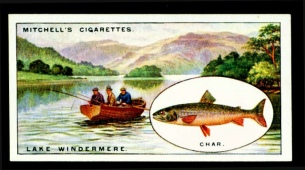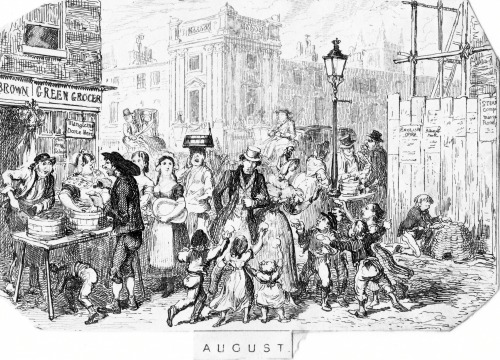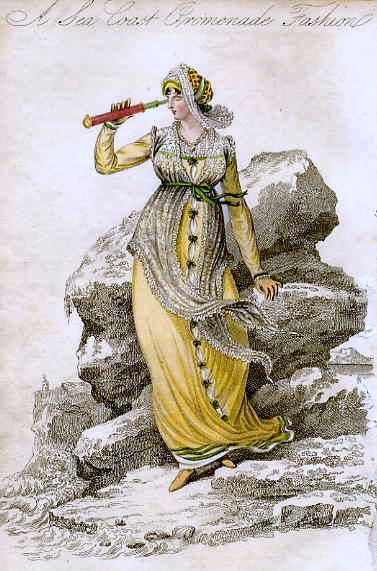 I love ice cream – which is fortunate as my husband, who is the cook in our house, has bought an expensive Italian ice cream maker which means we’ve got to eat lots to make it earn its keep!
I love ice cream – which is fortunate as my husband, who is the cook in our house, has bought an expensive Italian ice cream maker which means we’ve got to eat lots to make it earn its keep!
But ice cream was a real luxury in the early 19thc. There was no way of making ice artificially – it had to be harvested and stored which was easy enough if you had a large estate with lakes and ponds which would freeze in winter and staff to do the work. Slabs of ice were cut and packed in ice houses where they could be insulated with thick walls and straw to keep the ice right through the year. But how did they manage in towns and cities? Presumably loads of ice were brought in by wagon, melting all the time, and would be stored in insulated rooms.
Once you had your ice, making frozen or chilled desserts was still hard work. I own a copy of The Complete Confectioner or, the Whole Art of Confectionary Made Easy by Frederick Nutt (1815). The book has a frontispiece (above) of a lady with a magnificent pineapple – a real status symbol at the time and so expensive that you could hire one as a centrepiece for your smart dinner party and then return it, untouched, the next day.
Mr Nutt has pages of receipts for ice creams and water ices. Here is the one for barberry ice cream, which gives the basic method used for all the others.
“Take a large wooden spoonful of barberry jam, and put it in a bason with one pint of cream; squeeze one lemon in, mix it well; put it into the freezing pot and cover it; put the freezing pot into a pail and some ice all round the pot; throw a great deal of salt on the pot in the pail, turning your pot around for ten minutes; then open your pot and scrape it from the sides, cover it up again and keep turning it for some time, till your cream is like butter, and as thick; put it in your moulds, put them into a pail, and cover it with ice and salt for three quarters of an hour, till you find the water is come to the top of the pail; do not be sparing of salt, for if you do not use enough it will not freeze: dip your mould into water, and turn it out on your plate to send to table.”
He uses jams and cordials extensively as flavourings for his ices and it was possible to buy syrups ready made. Here is the billhead for F Parmentier & Co. Confectioners of 9, Edwards Street, Portman Square for 1812. The purchaser had bought a bottle of orange syrup for 7 shillings, another of lemon at the same price and rout cake at 4 shillings.

Gunther’s in Berkeley Square was the most famous of the London tea rooms and there you could have ices brought out for the ladies to eat in their carriages under the spreading lime trees that shaded the square.
The illustration of the three young women is French, from Le Bon Genre series of the early 1820s. It is called L’Embarras du Choix, although the lady on the left seems more interested in staring at the handsome waiter than choosing her ice cream from the menu!






 You are slumming it in Regency London – perhaps you’re in cheap lodgings avoiding your creditors, or dodging a furious father armed with a shotgun or your gambling habit has got the better of you and you are seriously out of pocket. You have found your cheap lodgings – a miserable, unheated room that you share with bedbugs, fleas, mice and the other inhabitants of your straw pallet – now you need to find something to eat. [The print above is of Logic’s lodgings in one of the Tom & Jerry tales by Pierce Egan. Note the dome of St Paul’s behind and the pawnbroker’s shop with its three gold balls on the left.]
You are slumming it in Regency London – perhaps you’re in cheap lodgings avoiding your creditors, or dodging a furious father armed with a shotgun or your gambling habit has got the better of you and you are seriously out of pocket. You have found your cheap lodgings – a miserable, unheated room that you share with bedbugs, fleas, mice and the other inhabitants of your straw pallet – now you need to find something to eat. [The print above is of Logic’s lodgings in one of the Tom & Jerry tales by Pierce Egan. Note the dome of St Paul’s behind and the pawnbroker’s shop with its three gold balls on the left.]
 Francis Grose toured the back-slums and the rookeries of London in the 1780s collecting cant and slang terms for his Dictionary of the Vulgar Tongue, assisted (or possibly supported) by his servant Batch. Judging by his portrait Grose had sampled plenty of naked boys, aldermen and Bloody Jemmys himself. He inspired a number of imitators (and downright plagiarists) but all these late Georgian slang dictionaries are arranged in alphabetical order of the terms defined.
Francis Grose toured the back-slums and the rookeries of London in the 1780s collecting cant and slang terms for his Dictionary of the Vulgar Tongue, assisted (or possibly supported) by his servant Batch. Judging by his portrait Grose had sampled plenty of naked boys, aldermen and Bloody Jemmys himself. He inspired a number of imitators (and downright plagiarists) but all these late Georgian slang dictionaries are arranged in alphabetical order of the terms defined. 

 ales – where the water temperature never rises above 20˚C. They have been a rare treat since at least Tudor times – Henry VIII used to have barrels of them sent to his palaces – but I have never tried one so I don’t know whether this is a case of rarity making something particularly desirable or whether they really are different and delicious. Apparently the flesh is delicate and pink-tinged. Perhaps a Lake District reader can tell me what they taste like!
ales – where the water temperature never rises above 20˚C. They have been a rare treat since at least Tudor times – Henry VIII used to have barrels of them sent to his palaces – but I have never tried one so I don’t know whether this is a case of rarity making something particularly desirable or whether they really are different and delicious. Apparently the flesh is delicate and pink-tinged. Perhaps a Lake District reader can tell me what they taste like!







